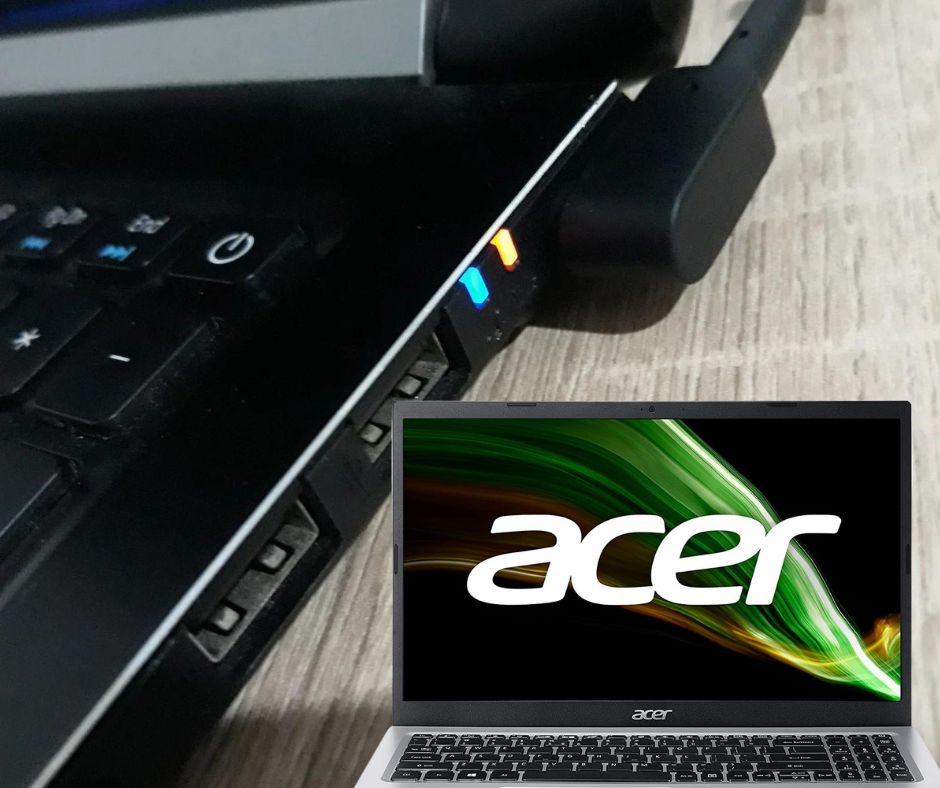Troubleshooting an Acer Laptop That Won’t Turn On:
Acer Laptop won’t Turn On HOW SOLVED THIS PROBLEM. Experiencing issues with an Acer laptop that won’t turn on can be frustrating. There are multiple potential causes, ranging from simple power issues to more complex hardware or software problems. This guide will walk you through a systematic approach to diagnosing and potentially fixing the problem.
Initial Checks : Acer Laptop Wont Turn On
1. Power Supply and Battery
- Check the Power Cord and Adapter: Ensure that the power cord and adapter are securely connected to both the laptop and the power outlet. Look for any signs of damage or wear on the cord and adapter. Try using a different power outlet or a known-good adapter if available.
- Battery: If your laptop has a removable battery, take it out and hold the power button for 15-30 seconds to drain any residual power. Reinsert the battery and try to turn on the laptop again. If the battery is non-removable, ensure it’s properly seated and attempt to power on the laptop with the charger plugged in, bypassing the battery.
2. Power Button
- Sometimes the power button itself can be the issue. Ensure it’s not stuck or broken. Press it firmly and hold it for a few seconds to see if it triggers a response.
Troubleshooting Hardware
Inspect for Physical Damage
- Examine the laptop for any visible signs of physical damage. Look for loose or broken components, damaged ports, or cracked screens that might indicate internal issues.
Check for Loose Connections
- If you’re comfortable opening your laptop, check for loose internal connections. Ensure the RAM, hard drive, and other components are properly seated in their respective slots. Be cautious and follow manufacturer guidelines when opening your laptop to avoid voiding warranties or causing further damage.
How to Unlock iPhone Passcode Without Computer Free
External Devices
- Disconnect all external devices (USB drives, external hard drives, peripherals) and try to power on the laptop. Sometimes, a malfunctioning external device can prevent the laptop from starting.
Software and Firmware Issues
BIOS/UEFI Settings
- Sometimes, issues with the BIOS/UEFI settings can prevent the laptop from booting. If you can access the BIOS/UEFI menu (usually by pressing a key like F2, F10, DEL, or ESC during startup), try resetting the settings to default. Look for an option to restore defaults or reset settings.
Boot Issues
- If the laptop turns on but doesn’t boot into the operating system, it could be a software issue. Try booting into Safe Mode (typically by pressing F8 during startup) or using a recovery disk/USB to troubleshoot software problems. Reinstalling the operating system may be necessary if system files are corrupted.
Advanced Troubleshooting
Hardware Diagnostics
- Many Acer laptops come with built-in hardware diagnostics tools accessible from the BIOS/UEFI menu. Run these diagnostics to check for hardware failures. Look for any error codes or messages that can help pinpoint the issue.
Replace Faulty Components
- If diagnostics point to a specific component failure (like the RAM, hard drive, or motherboard), consider replacing the faulty part. If the laptop is under warranty, contact Acer support for repair or replacement services.
Professional Help
Seek Professional Assistance
- If all else fails, it may be time to seek professional help. Contact Acer customer support or take your laptop to a certified repair center. Provide them with detailed information about the troubleshooting steps you’ve already taken to expedite the diagnosis and repair process.
Preventive Measures
Regular Maintenance
- Keep your laptop in good condition by performing regular maintenance. Clean the vents and fans to prevent overheating, update your software and drivers regularly, and use a surge protector to protect against power surges.
Back-Up Data
- Regularly back up your data to avoid losing important information in case of hardware failures. Use external drives or cloud services for backups.
Conclusion
Diagnosing and fixing an Acer laptop that won’t turn on requires a methodical approach. Start with the simplest solutions, like checking the power supply and battery, before moving on to more complex hardware and software troubleshooting. If necessary, seek professional help to avoid causing further damage. Regular maintenance and preventive measures can help keep your laptop in good working condition and minimize the risk of future issues. By following these steps, you can potentially save time and money while getting your laptop back to working order.


